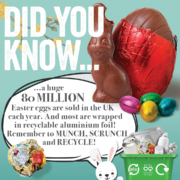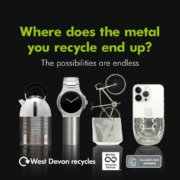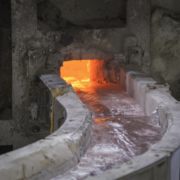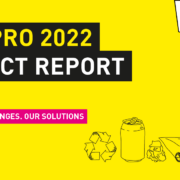Tom Giddings, executive director of Alupro, looks to the year ahead and explains what the aluminium packaging recycling industry wants to see in 2024.
When we look back over the past 12 months, it’s likely to go down in history as a year of frustration for the packaging value chain. Delays to expected consultations, disappointing decisions from the government and fluctuating PRN prices all played their part.
However, there were, of course, numerous upsides too. Finally receiving a consultation response regarding DRS was a massive step in the right direction, while setting an official date for the mandatory recycling of kerbside and commercial food waste put real fire power behind tackling a growing environmental challenge.
In addition, while consistency in collections legislation may have been shelved as part of Prime Minister Rishi Sunak’s net-zero shake-up, Simpler Recycling will take us a welcome step forward towards a more uniform material scope for kerbside recycling collections and a higher recycling rate for England. It must be said that the opportunity for the future looks incredibly bright.
For those of us working towards achieving a more circular economy, it’s therefore important to see 2024 as a year of progress, decision-making and action – an opportunity to build momentum and drive real, positive, proactive change. From an aluminium perspective, this can be condensed down into three key asks:
- A record year for aluminium packaging recycling rates
Aluminium packaging recycling in the UK continues to go from strength to strength. Continued investment into awareness and education initiatives is helping to drive widespread behavioural change, with households appreciating both the environmental and economic value of best practice recycling.
The latest PRN data perfectly reflects this impressive growth. In September 2023, for example, the industry had already achieved 92% of its annual obligation (an uplift from 116,439 tonnes to 137,275 tonnes compared to the same period in 2022), with aluminium collected through kerbside, bring, on-the-go and via incinerator bottom ash (IBA) all rising.
While some industry critics had suggested that the high recycling rates reported during the COVID-19 pandemic were just a short-term trend, it’s positive to see that impressive volumes and positive consumer recycling behaviours have continued.
In 2024, we’d like to see even higher collection and recycling volumes of aluminium packaging. After all, we’re hugely ambitious about aluminium’s role within a circular packaging economy and we’re committed to leading from the front. If PRN prices remain realistic, we see no reason as to why this shouldn’t happen.
- Real progress when it comes to future legislation=
With policy now progressing fast, the next 12 months should be seen as a period of real opportunity. Specifically, we’d like to see progress made in appointing a DRS scheme administrator, as well as the detail of the scheme finally bottomed out. We’d also like to see further momentum made towards agreeing a series of decisions that will ensure the scheme’s best possible long-term output. You can read our thoughts in further detail here.
Elsewhere, we welcome the formation of an EPR steering group and think that Margaret Bates is an excellent appointment as interim Head of the UK Extended Producer Responsibility for Packaging Scheme Administrator. Let’s now accelerate momentum and ensure that it delivers fair proposals, while securing widespread input from the wider supply chain.
- Clear, consistent, creative communication
As we move ever closer towards a bright new future for the recycling industry, relevant, timely and consistent communication is more important than ever. We’re proud to be continuing with our hugely successful aluminium packaging recycling programmes (MetalMatters and Every Can Counts) and remain committed to flying the flag – both in terms of awareness and education.
Our initiatives delivered widespread benefit in 2023 and proved instrumental in increasing consumer engagement across the UK. Results from our programmes highlighted the real value of communication, as well as changing consumer behaviours when it comes to best practice recycling.
In 2024, we’ll continue to lead by example. However, banging the drum when it comes to consumer education is a gauntlet that we all must pick up and I’d like to see this happening across the wider packaging value chain. After all, with new legislation looming and widespread change likely, communicating with clarity, consistency and creativity must remain our utmost priority.
While 2023 might go down on record as somewhat of a frustrating year, the next 12 months are perfectly positioned to deliver progress, decision-making and action. Personally, I believe that our most important priorities are striving to reach ever higher recycling rates, inspiring real momentum when it comes to future legislation, and communicating with clarity.
As a sector we have the opportunity to build real momentum. It’s certainly an exciting time ahead, but collaboration is key to achieving the best possible results.
For more information about the Aluminium Packaging Recycling Organisation, visit www.alupro.org.uk.
ENDS











